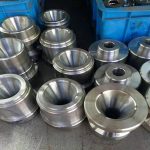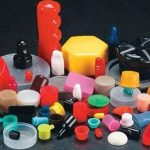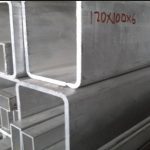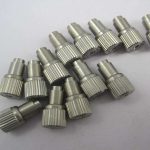Some time ago, China discovered a large metal deposit in Shaanxi, that is tungsten metal, its reserves reached 176 tons, accounting for about 7% of the global reserves!
What’s more exciting is that this metal is a non-renewable resource! Its global reserves are less than rare earths, and China’s proven reserves account for 80% of the global reserves!
Tungsten is very difficult to extract technically, and it took more than a year for China to overcome the technical difficulties.
Tungsten is a rare metal and a strategic metal. The reason why this mineral is classified as a strategic metal is mainly because it has an extremely important role, especially in military applications. At present, a large number of tungsten alloy armor-piercing projectiles produced in various countries will be used. Tungsten, and tungsten is recognized as the metal with the best armor penetration effect.
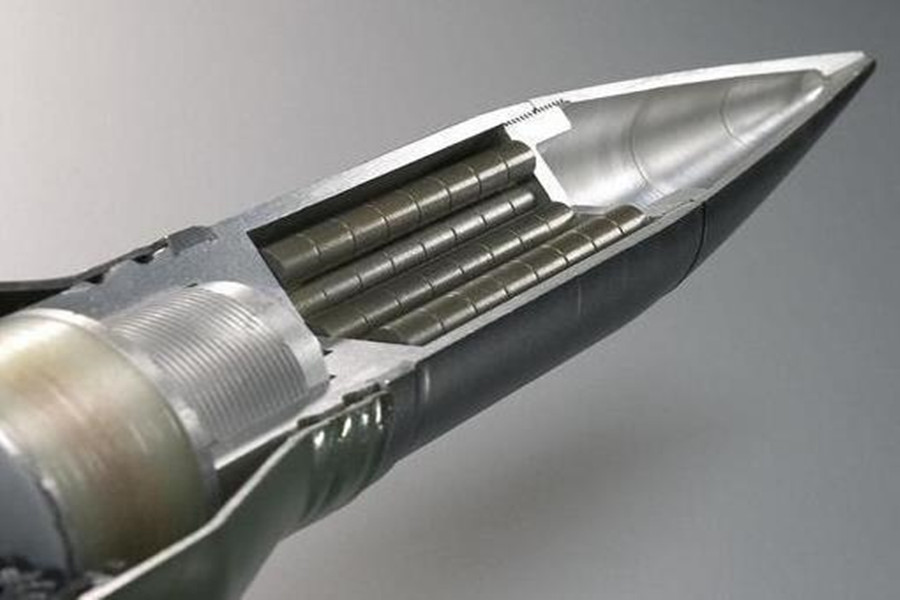
A few years ago, this technology was still controlled by some foreign countries. These countries imported a large amount of tungsten ore purification from China and then sold it back to China. However, in recent years, China has broken through the purification technology of metal tungsten.
Tungsten is China’s national strategic resource and is restricted by mining quotas. Theoretically, its annual output is limited to about 91,300 tons. However, because it is often mined as an associated ore of molybdenum ore, the mining quota exceeded 50% in previous years.
Imagine that once this resource is over-used and depleted in the future, its value will become more prominent, and if there is no new metal to replace rhenium, many tanks will not have available armor-piercing shells as a replacement!
This shows how important it is to restrict the export of this precious metal!
It is precisely because tungsten is of great significance in military strategy that China has now begun to strictly control the export of this metal.
So, besides tungsten, what other metals are also precious? The editor will take stock for everyone!
1. Metal antimony-the content of antimony in the earth’s crust is 0.0001%
Antimony, a silvery-white shiny, hard and brittle metal. There is a scaly crystal structure. It gradually loses its luster in moist air, and burns into white antimony oxides under strong heat. It is easily soluble in aqua regia and soluble in concentrated sulfuric acid. The relative density is 6.68. The melting point is 630°C. The boiling point is 1635°C (1440°C). Toxic, the minimum lethal dose (rat, abdominal cavity) 100mg/kg. It is irritating. It is worth mentioning that the World Health Organization stipulates that the antimony content and daily intake of water should be less than 0.86 micrograms/kg per day. Japan restricts that the antimony content in PET bottles should be less than 200 ppm, and for hot-filled beverages, PET bottles containing antimony are prohibited. The European Union stipulates that the antimony content in food should be less than 20ppb, and the antimony content in environmentally-friendly PET fibers should not exceed 260ppm.
Antimony is a toxic chemical element. Its symbol is Sb and its atomic number is 51. It is a kind of metal-like metal with metallic luster, which mainly exists in the sulfide mineral antimonite (Sb2S3) in nature. It is known that antimony compounds were used as cosmetics in ancient times, and metallic antimony was also recorded in ancient times, but at that time it was mistaken for lead. Around the 17th century, humans learned that antimony is a chemical element.
China has become the world’s largest producer of antimony and its compounds, most of which are produced in the tin mine in Lengshuijiang City, Hunan Province. The industrial production method of antimony is to roast first, and then reduce it with carbon at high temperature, or directly reduce the antimonite with metallic iron.
The role of antimony is very obvious, such as the lead-antimony alloy plate used in lead-acid batteries. Antimony, lead and tin alloys can be used to improve the performance of welding materials, bullets and bearings. Antimony compounds are important additives for chlorine- and bromine-containing flame retardants that are widely used. Antimony is also widely used in emerging microelectronics technologies, such as AMD graphics card manufacturing.
Antimony is a nitrogen group element (group 15), and its electronegativity is 2.05. According to the periodic law of elements, its electronegativity is greater than tin and bismuth, and smaller than tellurium and arsenic. Antimony is stable in the air at room temperature, but it can react with oxygen to form antimony trioxide when heated.
Antimony is a gray metal with a silver luster, and its Mohs hardness is 3. Therefore, pure antimony cannot be used to make hard objects. For example, Guizhou Province once issued coins made of antimony in 1931, but because antimony is easy to wear and tear, it suffers serious losses during the circulation process. Antimony does not react with acid under normal conditions.
Important producer countries: According to a report by the British Geological Survey as early as 2005, China is the country with the largest antimony production in the world, accounting for 84% of the world’s total, far exceeding South Africa, Bolivia and Tajikistan. In particular, the tin mine in Lengshuijiang City, Hunan Province is the world’s largest antimony mine, with an estimated reserve of 2.1 million tons at the time. According to a report by the US Geological Survey (2010), China’s production of antimony accounts for 88.9% of the world’s total.
Based on previous estimates based on the British Losky Mining Consulting Formula. Russia (accounting for 4.14%, production of 6,500 tons), Myanmar (accounting for 3.76%, production of 5,897 tons), Canada (accounting for 3.61%, production of 5,660 tons), Tajikistan (accounting for 3.42%, production of 5,370 tons) and Bolivia (accounting for 3.17%) , 4,980 tons).
Important use: Mainly used in new energy batteries and aerospace materials. The main function of antimony in alloys is to increase hardness, and is often referred to as a hardener for metals or alloys. After adding different proportions of antimony to the metal, the hardness of the metal will increase. Therefore, it can be used to make antimony and antimony compounds for munitions. It is a very important strategic material. It is also used as an additive to polyester resin in the glass fiber composite material (commonly known as glass fiber reinforced plastic) industry, such as the engine cover of light aircraft.
In addition, lead-antimony alloys can be used to paint the transmitter and receiver of NPN alloy junction transistors. Indium antimonide is also a material used to make mid-infrared detectors. Antimony sulfide has been proven to stabilize the friction coefficient of automobile brake pad materials. Antimony is also used in the manufacture of bullets and bullet tracers.
2. Metal rhenium-has an important “rhenium effect”
Rhenium is a truly rare element. Its content in the earth’s crust is smaller than all rare earth elements, and only greater than those of protactinium and radium. In addition, it does not form a fixed mineral, and is usually associated with other metals. Make it the last element found in nature. Rhenium, as a member of the manganese sub-family, predicted its existence as early as when Mendeleev established the periodic system of elements. He called it dwi-manganese (sub-manganese). A member that was not discovered at that time was called eka-manganese (like manganese). Mosley later determined that the atomic numbers of these two elements were 75 and 43, respectively. Because an unknown element can often be found in minerals with similar elements, scientists have been working to find these two elements from manganese ore, platinum ore, and columbite (minerals of tantalum and niobium). It was not until 1925 that Nordak, Tucker, and Berg of Germany used X spectroscopy to find the element number 75 rhenium from a large number of concentrated products of minerals and rocks, and the element symbol was designated as Re.
In nature, rhenium is distributed in molybdenite, rare earth ore and niobium-tantalite, and the content is very low. The molybdenite may exist in the form of rhenium disulfide ReS2 or rhenium heptasulfide Re2S7, and the content is slightly higher. There are two natural isotopes of rhenium: Re-185 is stable and Re-187 is radioactive.
Rhenium can increase the strength and plasticity of tungsten, molybdenum and chromium at the same time. This phenomenon is called the “rhenium effect”. Adding a small amount (3%~5%) of rhenium can increase the recrystallization temperature of tungsten by 300℃~ 500℃—The above-mentioned effect of rhenium (Re) is called rhenium effect. W-Re and Mo-Re alloys have good high-temperature strength and plasticity, and can be processed into plates, sheets, wires, wires, and rods for use in aerospace, Aviation high-temperature structural parts (spouts, nozzles, heat shields, etc.), elastic components and electronic components, etc.
Important producing countries: During 1978 and 1979, the total global production of rhenium was 7,210 and 7,260 kg, respectively. Among them, the Federal Republic of Germany, Chile, Canada and the former Soviet Union are the main producers of rhenium. The global rhenium resources are mainly distributed in the Americas and Europe. According to data released by the U.S. Geological Survey in 2015, the global proven reserves of rhenium are about 1,100 tons, of which the proven reserves of rhenium in the United States are about 500 tons and those in other countries are 600 tons.
The global rhenium resource is about 2500 tons. Chile has the most abundant rhenium resource with 1,300 tons, followed by the United States (390 tons), Russia (310 tons), Kazakhstan (190 tons), Armenia (95 tons), Peru ( 45 tons) and Canada (32 tons). The total reserves of rhenium resources in other countries in the world are about 91 tons.
Chile is also the largest producer of rhenium. In 2014, rhenium production (26 tons) accounted for about 53% of global production, followed by the United States (7.9 tons), Poland (7.6 tons), Uzbekistan (5.0 tons) and Armenia (0.3 tons) ). The United States is the world’s largest consumer of rhenium, while Chile and Poland are the main suppliers of rhenium metal to the United States.
The retained reserves of rhenium resources in my country are 237 tons (2013), and there are 11 rhenium mines located in Shaanxi (accounting for 44.3% of the national rhenium reserves), Heilongjiang (31.6%), Henan (12.7%), Hunan, Hubei, Liaoning, 9 provinces of Guangdong, Guizhou and Jiangsu. Almost all rhenium resources in my country are associated with molybdenum deposits, mainly distributed in Jinduicheng molybdenum deposits in Shaanxi, Luanchuan molybdenum deposits in Henan, Daheishan molybdenum deposits in Jilin, and Duobaoshan copper (molybdenum) deposits in Heilongjiang. Reserves account for about 90% of the country’s total reserves of rhenium. The output of rhenium in China is not high, about two tons per year.
Important use: Due to the high price, it was not until 1950 that it changed from a laboratory treasure to an important new metal material. Rhenium is widely used in various sectors of modern industry, mainly used as a catalyst in the petroleum industry and automobile industry, as a catalyst for petroleum reforming, and rhenium alloys for the electronics industry and aerospace industry.
1. Rhenium is mainly used as a catalyst in the petroleum industry,
2. Rhenium has high electron emission performance and is widely used in radio, television and vacuum technology.
3. Rhenium has a very high melting point and is a major high-temperature instrument material; at the same time, rhenium-containing alloys are also used in the manufacture of heat-resistant parts for aero engines. About 80% of rhenium in the world is used in the production of aero engines.
4. The alloy of rhenium and rhenium can also be used as electronic tube components and ultra-high temperature heaters to evaporate metal.
5. Tungsten-rhenium thermocouple does not soften at 3100℃. Adding 25% rhenium to tungsten or molybdenum alloy can increase ductility; rhenium is used as high-temperature coating on rockets and missiles, instruments and high-temperature parts for spacecraft, such as Rhenium is required for thermal shielding, arc discharge, electrical contactors, etc.
6. Metal rhenium and its alloys can be used to make tap water nibs and high-temperature thermocouples; used as catalysts in alcohol dehydrogenation and ammonia synthesis; alloys containing rhenium can withstand high temperatures; due to the dispersion of rhenium, the price is expensive, and the actual application remains to be Development. It is also used to make electric filaments, shells for artificial satellites and rockets, and protective panels for atomic reactors.
3, gallium metal-has the reputation of “the backbone of the electronics industry”
Gallium is a kind of rare metal with low melting point and high boiling point. It has the reputation of “backbone of the electronics industry”. Gallium is a gray-blue or silver-white metal with a symbol Ga and an atomic weight of 69.723. The melting point of gallium is very low, but the boiling point is very high. Pure liquid gallium has a significant tendency to overcool and is easily oxidized in the air to form an oxide film.
Gallium is the first chemical element in the history of chemistry that was first predicted from theory and then discovered and verified in nature. In 1871, Mendeleev discovered that there was a gap under the aluminum element in the periodic table that had not yet been occupied. He predicted that the atomic weight of this unknown element was about 68, the density was 5.9 g/cm³, and the properties were similar to aluminum. The prediction was confirmed by French chemist Bois Bodran.
Gallium was discovered in Paris in 1875 by Bois Beaudran. He observed a new purple line on the atomic spectrum of zinc extracted from zinc blende ore (ZnS). This means that an unknown element has appeared. In November 1875, Bois-Bodran extracted and purified this new metal and proved that it resembled aluminum. In December 1875, he once announced it to the French Academy of Sciences.
Because the concentration of gallium in the earth’s crust is very low. It accounts for 0.0015% of the total in the earth’s crust. It is widely distributed, but it does not exist in a pure metal state, but in the form of CuGaS2, but it is very rare and not economically important.
More than 90% of the world’s primary gallium is extracted during the alumina production process, which is a comprehensive utilization of mineral resources. By extracting metallic gallium, the added value of mineral resources is increased, the quality of alumina is improved, and the waste is reduced.” The pollution of “red mud” is therefore very consistent with the current low-carbon economy’s principle of maximizing utilization value at the least cost of natural resources.
Important producer countries: According to 2015 data from the US Geological Survey, the global reserves of gallium in bauxite exceed 1 million tons. Among them, China, Germany and Ukraine are the top three crude gallium producers in the world today. It is worth mentioning that China’s bauxite resources with a high content of gallium are about to be exhausted and may be able to sustain the mining time for another 10 years at most.
Important uses: Gallium is currently mainly used in the fields of semiconductors, optoelectronic materials, solar cells, alloys, medical devices and magnetic materials. Gallium-68 emits positrons and can be used for positron tomography. Gallium indium alloy can be used as a substitute for mercury.
Link to this article: Inventory of the world’s four major metals more precious than rare earth gold
Reprint Statement: If there are no special instructions, all articles on this site are original. Please indicate the source for reprinting:https://www.cncmachiningptj.com/,thanks!
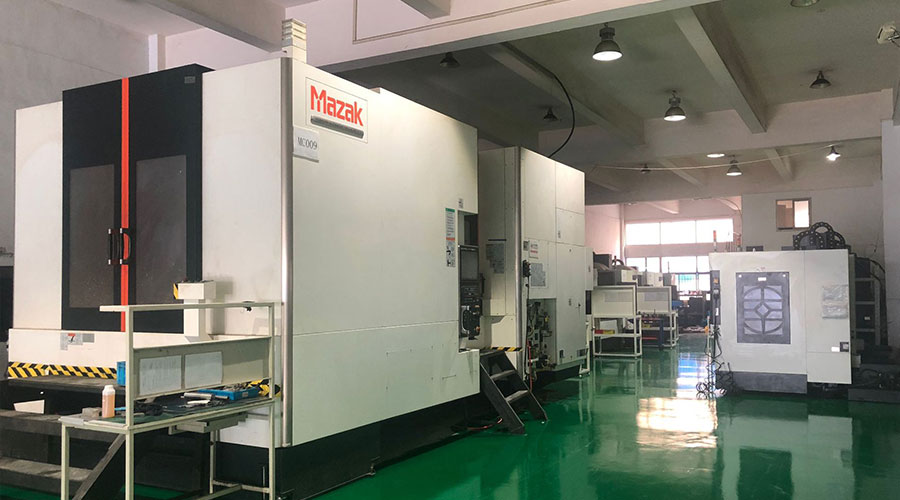 PTJ® provides a full range of Custom Precision cnc machining china services.ISO 9001:2015 &AS-9100 certified. 3, 4 and 5-axis rapid precision CNC machining services including milling, sheet metal to customer specifications,Capable of metal & plastic machined parts with +/-0.005 mm tolerance.Secondary services include CNC and conventional grinding, laser cutting,drilling,die casting,sheet metal and stamping.Providing prototypes, full production runs, technical support and full inspection.Serves the automotive, aerospace, mold&fixture,led lighting,medical,bicycle, and consumer electronics industries. On-time delivery.Tell us a little about your project’s budget and expected delivery time. We will strategize with you to provide the most cost-effective services to help you reach your target,Welcome to Contact us ( [email protected] ) directly for your new project.
PTJ® provides a full range of Custom Precision cnc machining china services.ISO 9001:2015 &AS-9100 certified. 3, 4 and 5-axis rapid precision CNC machining services including milling, sheet metal to customer specifications,Capable of metal & plastic machined parts with +/-0.005 mm tolerance.Secondary services include CNC and conventional grinding, laser cutting,drilling,die casting,sheet metal and stamping.Providing prototypes, full production runs, technical support and full inspection.Serves the automotive, aerospace, mold&fixture,led lighting,medical,bicycle, and consumer electronics industries. On-time delivery.Tell us a little about your project’s budget and expected delivery time. We will strategize with you to provide the most cost-effective services to help you reach your target,Welcome to Contact us ( [email protected] ) directly for your new project.
Link to this article:Inventory of the world's four major metals more precious than rare earth gold
Reprint Statement: If there are no special instructions, all articles on this site are original. Please indicate the source for reprinting:Tungusten,Thanks!^^



